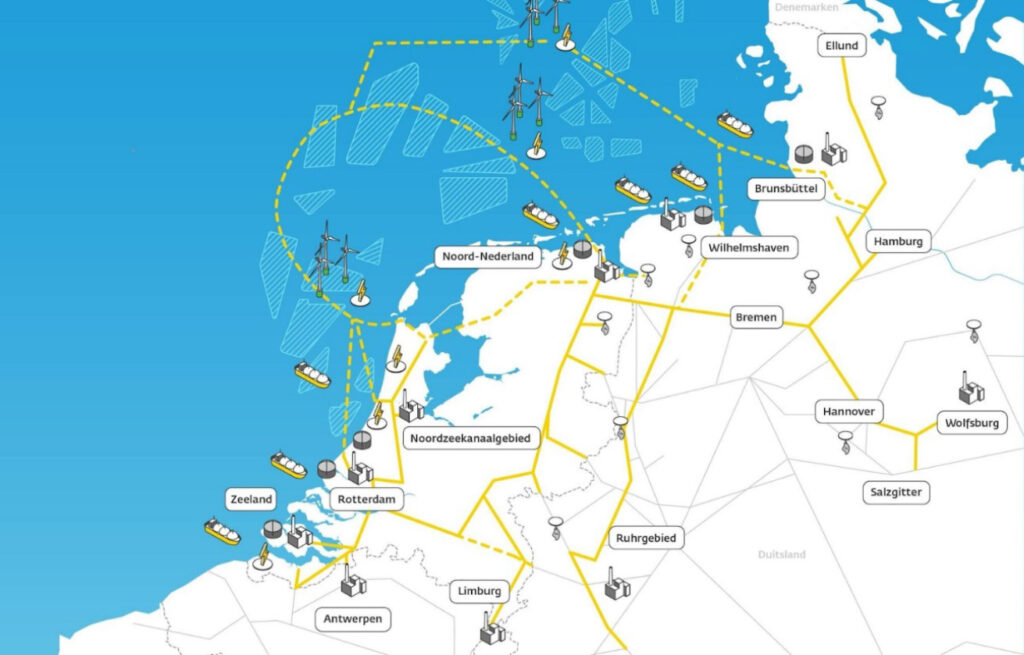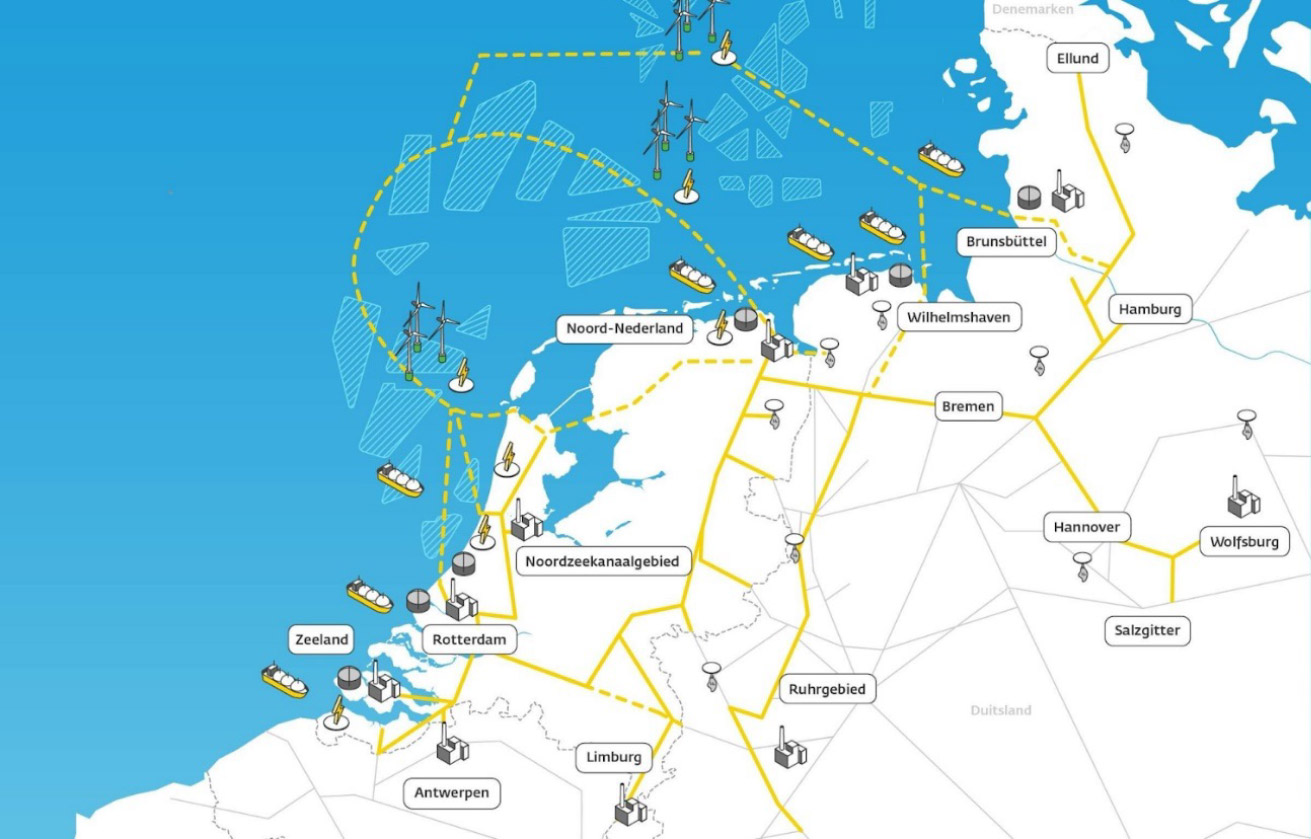Developments with hydrogen are happening very quickly. Gasunie broke ground for the first kilometers of the hydrogen network – see picture below. Shell started the construction of the first large electrolyser on the Maasvlakte. And: the first few small electrolysers are in use in Zuidwending and Oosterwolde. The hydrogen landscape of the future is taking shape with the large hydrogen network on the one hand and small-scale projects throughout the Netherlands on the other.

Large scale
Large-scale use of hydrogen will take place in the largest Dutch industry clusters: Rotterdam,
Amsterdam, Vlissingen, Delfzijl and Limburg (Chemelot). Gasunie will connect these with each other
through the hydrogen backbone, largely based on the existing natural gas pipelines.
The pipeline system will be under high pressure: 30 to 50 bar. Not more than one quality of hydrogen
can flow through a pipeline, so the standard hydrogen purity becomes 98%. This matches the desired
quality for the industrial use of hydrogen in the large clusters.
The large-scale production of green hydrogen in the Netherlands will be done with electrolysis, based
on electricity generated by offshore wind turbines. We will also import hydrogen from countries with
lots of sun and wind. This transport takes place by sea via hydrogen carriers such as ammonia or so-
called LOHCs (Liquid Organic Hydrogen Carriers) in large tankers. We then unload the tankers in our
current seaports, where we pump the hydrogen into the pipeline network.
Small scale
The Gasunie map shows that this large-scale infrastructure does not serve the entire country, as our
gas network currently does. In addition, the 98% purity in the Gasunie pipeline network is insufficient
for many users. We use fuel cells to convert hydrogen back into electricity. These are in cars, trucks,
buses and all other means of transport and machines that run on hydrogen. For this we need very
pure hydrogen that we generate with a small-scale infrastructure.
With small local electrolysers we use as much local green energy as possible from neighbouring wind
turbines and solar parks. These electrolysers will produce hydrogen of a high purity, so that it can be
used by fuel cells.
The distribution of this hydrogen takes place in small, local pipeline networks at a lower pressure
than the pressure in the Gasunie network. Or distribution is via tankers or other small-scale transport
systems that are being developed.
The hydrogen landscape in 2030 will thus become a combination of methods that complement each
other. Many local networks for very pure hydrogen, which various users can purchase. And a large
network for industrial use, with lower quality hydrogen.
